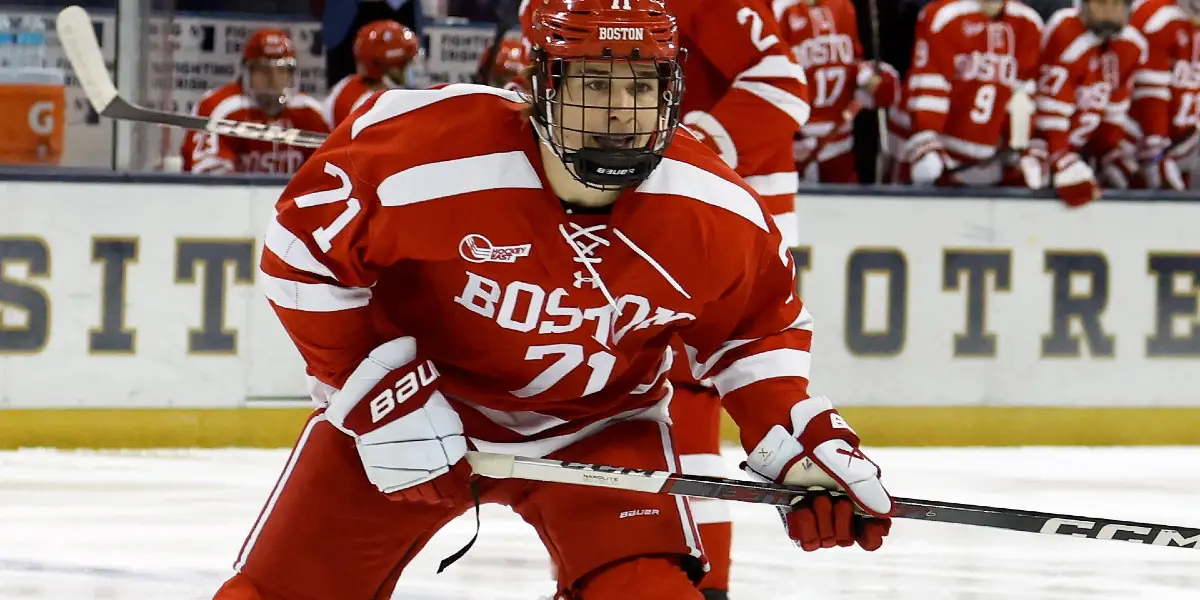
NHL Draft & Prospect Rules: When do or can prospects make the jump to the pro level? Not necessarily just the National Hockey League (NHL) but the American Hockey League (AHL) as well? I see this topic of confusion appear once every few weeks, so I have broken it down as best as possible to give fans a better understanding of what goes beyond center ice.
In the 2023 NHL Draft, 224 players were drafted to NHL clubs. Only three have played NHL games in the 2023-24 regular season. Connor Bedard, Leo Carlsson and Adam Fantilli. Why is this? Outside of the top 10 in almost every NHL Draft, these newly drafted prospects will probably not make it to the NHL for another 3-5 years.
This is because of multiple underlying reasons, but the main one is that they still need to develop. Being drafted into the NHL is one thing, and being able to compete and have a long career at the pro level is another. If you have a favourite prospect or are looking forward to seeing one in your team’s colours, you are going to have to be patient.
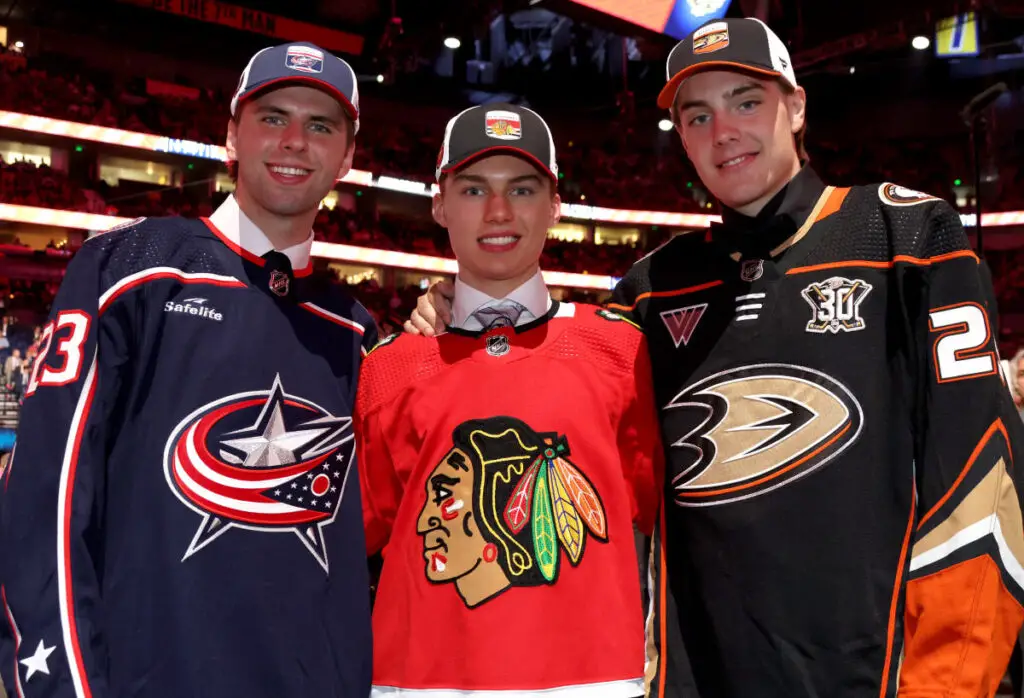
Depending on the player and skill set, it could be pretty far down the line. 3-4 years is typically a good benchmark, but every individual player develops differently. One breakout season or a solid overall career in the major juniors does not define a player, at least not all the time.
They are still young, and it’s happened before, holding high expectations for prospects based on their junior production just for them to fall short. It is easy to forget that not every 18-year-old will be a top-six generational talent. There are very few who are generational, and they come around once every ten years.
So, with that in mind, here is a breakdown of some of the most frequently asked questions about prospects, the draft, and entry-level contracts:
When Are Prospects Ready To Make The Jump To The AHL/NHL?
As an NHL prospect, the odds are against you right out of the gate. 63% of first-round picks make it into the NHL, but less than 25% of second-round picks and only 12% of third-rounder selections find their way. Former NHL general manager Doug MacLean said his math over the last decade showed that only 15% of second-round picks become impact players.
For example, Denver Barkey, who recently signed an entry-level contract with the Philadelphia Flyers, is having a monster year with the London Knights of the Ontario Hockey League. He is among the OHL league leaders with 33 goals, 65 assists, and 98 points in 62 games. Now, that is rather impressive. However, he still only has a 12% chance of making the NHL and less than 5% of becoming an impact player.
That’s why it is so hard to analyze prospects and to know if they will pan out until they make the NHL. There are, of course, the “sleeper picks” that fall late into the draft. Those are called “diamonds in the rough,” and there is a lot of luck and extensive scouting involved in that process.
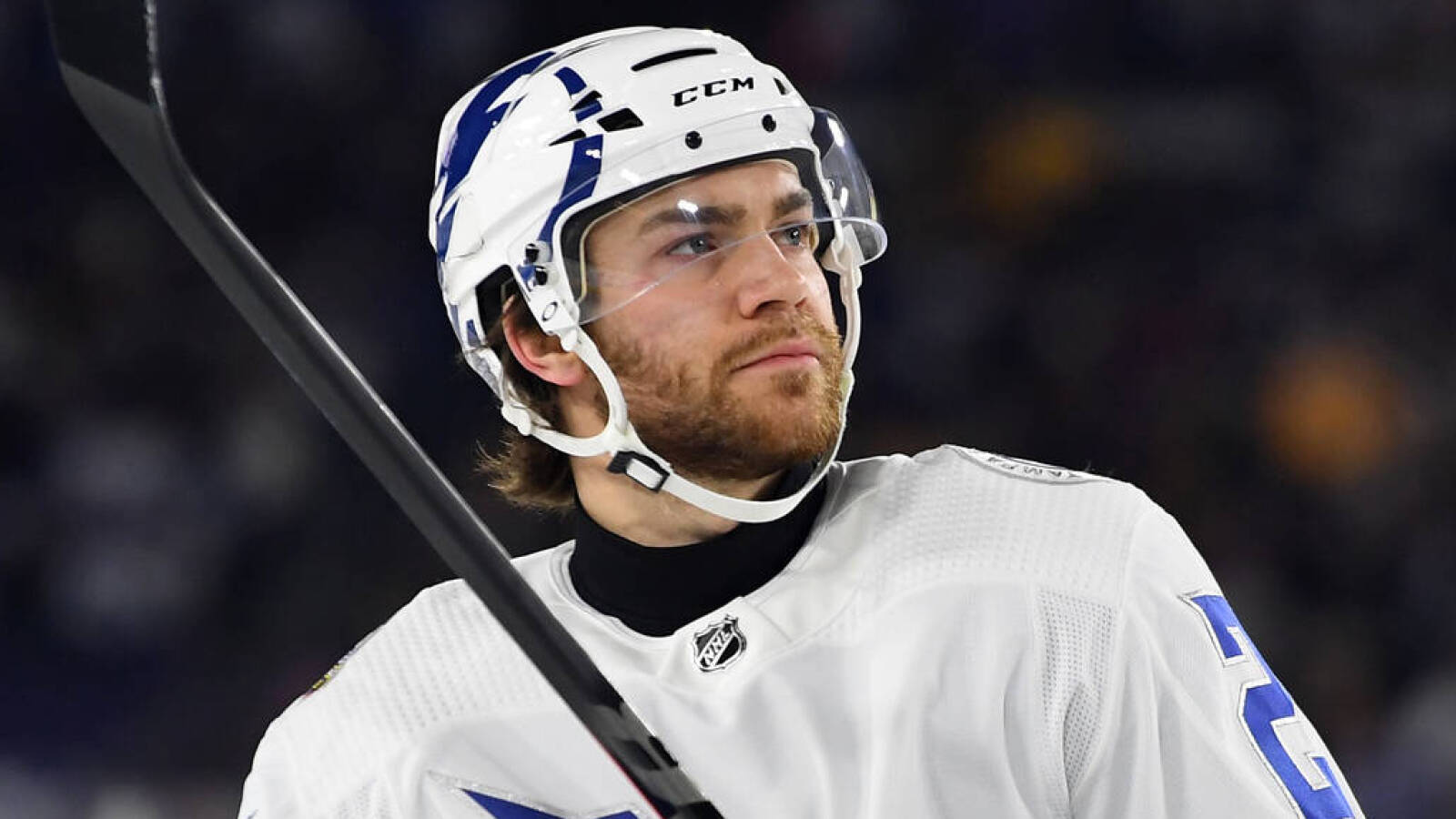
Brayden Point is a 2014 third-round draft pick by the Tampa Bay Lightning. He has two Stanley Cups and played over 500 games in his career. Point had to wait until 2016-17 to make his debut in Tampa Bay, and for a third-round pick, that is an early rookie season. For a player like Barkey, he is likely still three years away from cementing himself into a rookie campaign in the NHL.
What is even more rare than playing in the NHL is making it there without having to play in the American Hockey League (AHL) first. The CHL NHL Transfer Agreement requires all draft picks under the age of 20 (must be 20 before January 1st or midnight December 31st) to be loaned back to their major junior club unless they are on the NHL roster or have completed four full junior hockey seasons. In short, any player under the age of 20 before midnight on December 31 is ineligible to play in the AHL.
This is a civil agreement between the NHL and the league from which they were drafted. This is so the best players cannot immediately join their team affiliate in the AHL. This prevents other major junior leagues from becoming washed out or less competitive. There are ways to get around this, of course. If a player drafted was playing in one of the CHL leagues (OHL, WHL, QMJHL) at the time but was loaned to the team in that league by a club in Russia or Europe, for reference, the agreement does not apply. CHL players cannot be 20 years or older, making it a lot easier to transition into the AHL if a player is already a prospect and signed to an NHL team.
When Are Goalie Prospects Ready To Make The Jump To The NHL?
Goaltenders are different, as they always are. It is less rare for a netminder to be successful in the NHL when drafted outside of the first round. However, just like players, they follow the same age restrictions and guidelines as any other prospect.

To be a first-round pick as a goalie, they would have to be lights out. Since 2000, 13 goaltenders have been selected in the first round of the NHL Draft: Spencer Knight (2019, 13th overall), Yaroslav Askarov (2020, 11th overall), Jesper Wallstedt (2021, 20th overall), and Sebastian Cossa (2021, 15th overall) being the four most recent. That’s an average of one every two years, and there wasn’t a goalie drafted in the first round in 2023.
It is more common to see exceptional goalies selected in the second and third rounds of the draft. More common than not, many are still available in the later rounds, creating that “diamond in the rough effect.” Goalies can also take a lot more time to develop properly.
Slowly climbing the ranks after being selected, going from their major junior team into the AHL and earning a stay in order to get a good look at the NHL level. An AHL stint can be one to three years, with NHL starts mixed in. Philadelphia Flyers prospect Alexei Kolosov is a great example, likely to spend next season in the AHL with some NHL starts in between. Other examples are Devon Levi of the Buffalo Sabres, Nashville Predators’ Yaroslav Askarov, and Minnesota Wild Jesper Wallstedt.
Underlying Rules and How Entry-Level Contracts Work:
Any player younger than 25 during the year of their first contract must be signed to an entry-level contract, according to CapFriendly. All entry-level contracts are two-way deals, and the maximum salary is set at $950,000 annually for a player who is drafted in 2023. It is expected to increase over the next few years, likely into the millions.
Prospects can make NHL teams right out of training camp. Again, this is a rare occurrence for players drafted outside the first round. Although, they have to be signed to an entry-level contract. This is where the 10-game slide comes into play, to either prevent burning a year of the ELC or retaining it.
Once Prospects are in the AHL, they can have stints or spend a good chunk of the season at the NHL level. Players may also play up to 10 NHL games in a season (including playoffs) and still be eligible to slide on their entry-level contracts. The 10 NHL games, including playoffs, likely will not apply for prospects who signed entry-level contracts during the 2023-24 season. As there, deals probably don’t begin until the following season, 2024-25.
As soon as that 10-game threshold is breached, the contract officially takes money off the club’s books. Signing bonuses are paid each year, even if the contract slides.
NHL Camp Invitees, Signing Players Who Are Still Draft Eligible:
If a player is not drafted by the age of 20, that player becomes an unrestricted free agent, and any team is free to sign them. A player not signed by the draftee within two years can choose to reenter the draft if they are still eligible, and if they are not, they will become an unrestricted free agent.
Free agents can also be invited to training camps by any NHL team and given a PTO or a Professional Tryout contract in the NHL. If not drafted in their designated draft year, a player can sign with any NHL club offering a contract. Following the year after, by June 1, if not offered a contract, said player can reenter the draft. Quinn Mantei of the Brandon Wheat Kings in the Western Hockey League (WHL) was not drafted last year but was invited to training camp by the Calgary Flames. The Flames did not sign the 18-year-old, making him eligible for the 2024 NHL Draft.
Can A Player Choose Not To Be Drafted Or Signed By An NHL Team?
A player has the option to not sign a contract with the team that drafted them. If a player does not want to play for the team that drafted them, their only option is to wait a full calendar year. Once that year is up, the player then has the ability to go and sign wherever they choose.
Sometimes, more so, college players, it seems, will be drafted and then play their four years of college hockey to express displeasure and say they won’t play for the team that drafted them. Kevin Hayes, in 2010, was the 24th pick in the draft. Hayes elected to play college hockey instead of signing with the Chicago Blackhawks, the team that drafted him. This was, of course, no surprise. Hayes had an excellent career at Boston College, and it was expected that he would sign with the Blackhawks after college, he ultimately chose not to.
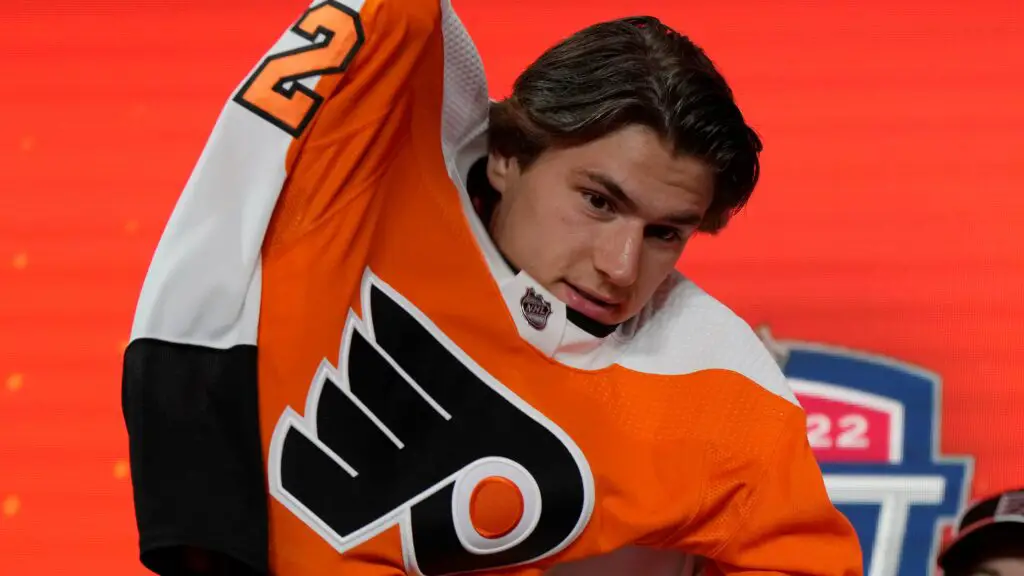
Another more recent Boston College product, Cutter Gauthier, was drafted by the Philadelphia Flyers in 2022 and appeared to be more than thrilled to be in the orange and black. That quickly changed, as six months later, he told management he did not want to play in Philadelphia. So, Gauthier waited until GM Daniel Briere could find a proper fit and return for the former first-round pick and was traded to the Anaheim Ducks. The news shocked the hockey world, and reports came out regarding both sides, even stating that Gauthier and his agent Kurt Overhardt rejected to speak with any of the Flyers front office numerous times.
More famously, in 1991, the Quebec Nordiques drafted Eric Lindros with the first overall pick but refused to play for them. However, expressed he would not play for them prior to the draft, Gauthier did not. Quebec drafted him anyway and traded him in a massive deal with the Philadelphia Flyers.
So, to answer the question. A player can request a trade or be re-eligible for the following NHL Draft, a process which typically goes unnoticed nine times out of ten, depending on how the player goes about it.
How Long Can NHL Teams Hold Draft Rights?
Russian, European compared to North American:
Teams that draft players outside North America will have four years to offer them an ELC or SPC. That typically falls under European and Russian clubs mostly, granted teams exclusive rights to sign the player to a contract in a longer time frame.
Section 8 of the NHL CBA governs the draft process. After a team drafts a player, they are placed on the team’s “Reserve List.” At that point, the club will have a window of time with exclusive rights to the player. For players drafted from a North American club, the team will have two years to present the player with an offer for a Standard Playing Contract (SPC). However, if the player is selected from a club outside North America, the club has four years to offer an SPC or ELC.
Matvei Michkov, a Russian-born player currently playing in the KHL, the Philadelphia Flyers, and General Manager Daniel Briere, who drafted Michkov in 2023, has a four-year window (till 2027-28) to sign the highly touted prospect.
Russian Political Issues: When Can Russian Prospects Come To America?
In December of last year, rumours picked up about a “Russian Ban” that Moscow is trying to mandate to have more control over young players. Specifically, The Russian Ice Hockey Federation has been working to implement said formality to patrol their young NHL prospects, a minimum of at least 4 to 5-year careers in the KHL for players before considering going abroad.
Russia takes pride in their prospects and wants them to be NHL-ready when they decide to disembark. It will be easier for a player like Michkov to leave when his time comes because the league knows he will make a difference in the National Hockey League and get credited ice time. Russia likes it when their players are “shown off” rather than pushed into the AHL, which they view as a lesser level of hockey to the KHL.
The good news is, as far as we know, this so-called ban is not outright, meaning it is open and direct, reaffirming young prospects in Russia, forcing them to remain there for at least three seasons. Supposedly, these actions were implemented before the 2023 draft, extending it to five seasons. However, nothing was announced or made official at the entry draft in Nashville, Tennessee.
These new rules will enforce new younger players coming into the league to extend their stay to reach the new minimum of 4 to 5 years. Contracts that have already been signed cannot and will not be altered. Any extensions and new contracts will fall under the league’s changes if made official. Therefore, this will not affect Michkov and other current KHL prospects. But things can change. Nothing is ever a sure thing when dealing outside of North America.
A lot is still up in the air, and rightfully so. But when contracts are completed or terminated it makes things a lot easier. The latter is a lot harder to come by, as it could take up to a year in most cases for a contract to be terminated after the request is filled.
There have been a few smooth transactions between the KHL and NHL. Most recently, the Minnesota Wild announced Wednesday that they signed Russian prospect Marat Khusnutdinov to a two-year entry-level deal. Khusnutdinov’s representatives received completed paperwork for a mutual contract termination with KHL Sochi on Wednesday morning.
They had to review it to make sure it met the requirements for a contract release before making the signing with the Wild official. Even though Sochi’s season has ended, Khusnutdinov’s contract ran through April 30, which is typical for most KHL contracts.
In addition, 24-year-old Nikolai Kovalenko has officially concluded his 2023-24 season in the KHL and is joining the Colorado Avalanche organization. He will have a short rehab stint with the Colorado Eagles after suffering an injury in his last game in Russia. Philadelphia Flyers’ top goalie prospect Alexei Kolosov is also expected to come to America in the next few weeks, granted his travel arrangements and visa (P-1A) are all sorted out.
College/NCAA Players Restrictions and Contracts:
Unlike the CHL, college players are a completely different discussion. NCAA prospects can not sign a contract with a professional team, including the CHL, nor can they attend camps with an NHL team for over 48 hours. If they choose to do so or want to stay longer, they cover all expenses. College-drafted players can only come to development camp, typically held after the draft in late July, which lasts two days.
It is rare to see a college prospect before they have finished their four-year degree at their respective school. In most cases, college players drafted to the NHL have been drafted before playing in the NCAA. Most NCAA hockey players come from the USHL, US Junior Leagues, BCHL, and other Canadian Junior Leagues.
Players who are drafted have already committed to a college and play for four years in the NCAA/NCHC. Every year, only a few players are drafted out of the NCAA, more than of late, and few sign as free agents after finishing their degrees. More often than not, college players are camp invitees and free-agent signings.
When Is The NHL Draft Held & Where?
Every year, the NHL Entry Draft is held on June 28 and 29, on a Friday and Saturday. Unlike the date, the location for the draft is always changing. The 2023 Draft was held in Nashville, Tennessee. This year, it will be in Las Vegas, Nevada. Although, NHL Commissioner Gary Bettman said the league is exploring the change where most team representatives will stay in their home cities instead of having all 32 clubs represented on the draft floor in a certain city.
“We were very comfortable, and still are, with the format that we’ve been using,” Bettman said. “It’s different than anybody else uses, and we kind of liked it. This was an organic proposal that a number of clubs suggested, and we said we’re not going to fight it. We’ll take a poll of all the clubs, and the overwhelming majority want to make a change.”
The first draft was held in 1963 and has been held annually since. The NHL Entry Draft was originally the NHL Amateur Draft until 1979.
Discover more from Inside The Rink
Subscribe to get the latest posts sent to your email.

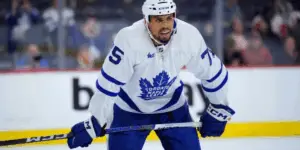
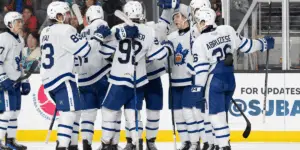
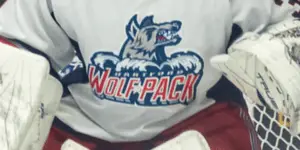
3 thoughts on “When Can Newly-Drafted Prospects Break Through Into The NHL?”